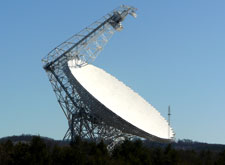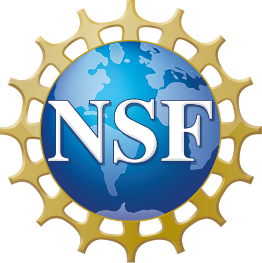- 1. Introduction
- 2. Science Case
- 3. General Configuration
- 4. Calibration and Optics
- 5. Receiver Electronics and Cryogenics
- 6. IF Processing
- 7. Monitor & Control
- 8. Data Processing
GBT 4mm Receiver Project Book
The Project Book is Under Construction
Chapter 1
Introduction
1.1 Introduction
The GBT is a 100 meter fully offset radio astronomy antenna that is capable of observing to at least 100 GHz. The 4mm Receiver Project Book describes the design and construction project for a cryogenic receiver front-end planned to operate over approximately 68-93 GHz, and interaction of the front-end with the rest of the GBT operational systems. Spectroscopy is the primary science goal for the receiver, but VLBI observations over at least part of the frequency range will also be supported.
The Project Book describes the technical design as of the date issued, and is regularly updated as the design evolves. It is organized into "chapters" covering the main system components, authored by various individuals working in the project (See "Contents" in the right-hand menu bar). Comments on the receiver design and plans are welcomed by the individuals responsible and the project management. The following section gives the main design parameters, explained in more detail in the accompanying chapters.
1.2 Specifications
- Tunable frequency range: 67-92GHz (Coverage to 93.2GHz is highly desirable.)
- Receiver noise temperature: To be specified.
- Instantaneous IF bandwidth: 2 GHz minimum.
- Polarization: Dual linear with selection of circular. Circular polarization axial ratio better than 1dB over 80-90 GHz minimum.
- Number of beams: Two dual polarized.
- Beam separation: 4.7 arcmin nominal.
- Calibration: Ambient temperature blackbody load on chopper wheel or vane for hot/sky calibration - switching rate 1 Hz or faster. In addition, inclusion of a 15K blackbody load with slower switching (~10 sec transition time) for hot/cold calibration is under consideration.
- Linearity: The receiver shall be linear to within 1% for input source temperatures (in addition to receiver temperature) of zero to 360K. This range allows planetary observations (i.e. Mars, Saturn, Mercury) plus up to ~80K atmospheric temperature.
- Frequency switching: Frequency switching up to +/-10 MHz (~30 km/sec velocity) at up to 10 Hz rate.
- Observing modes:
- Spectroscopy: Connections to the GBT Spectrometer via the common fiber IF system will be supported.
- Total power: Total power detection in the GBT IF Rack and the DCR will be supported.
- VLBI: Connections of one beam to the VLB Data Acquistion Rack via the common IF system will be supported. Provision for phase cal injection at IF will be provided.



